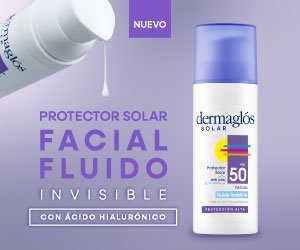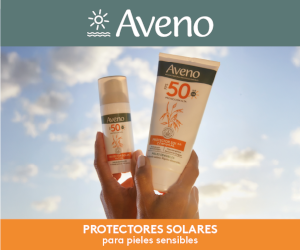Cutaneous manifestations of chronic kidney disease
Keywords:
chronic kidney disease, skin manifestations, uremic pruritus, calciphylaxisAbstract
Chronic kidney disease (CKD) is defined in adults as the presence of a structural or functional alteration that persists for more than 3 months (with or without impaired function) or a glomerular filtration rate (GFR) < 60 ml/min/1.73 m2 without other signs of kidney disease. Kidney transplant patients are included in this definition regardless of their degree of kidney damage. CKD is considered a major public health problem worldwide with an increase in its incidence due to the higher life expectancy of the population and its association with comorbidities such as arterial hypertension and diabetes mellitus. Knowing the cutaneous manifestations that can be observed in this group of patients by the dermatologist is essential in order to perform a correct diagnosis, an adequate treatment and to establish the preventive measures required to improve their quality of life.
This article addresses the most frequent skin disorders presenting in CKD patients.
References
I. Wofford J, Fenves AZ, Jackson JM, Kimball AB, et ál. The spectrum of nephrocutaneous diseases and associations: Genetic causes of nephrocutaneous disease. J Am Acad Dermatol. 2016;74:231-244.
II. Pascoe V, Fenves AZ, Wofford J, Jackson J, et ál. The spectrum of nephrocutaneous diseases and associations: Inflammatory and medication-related nephrocutaneous associations. J Am Acad Dermatol. 2016;74:247-270.
III. Sellarés VL, Rodríguez LD. Enfermedad renal crónica (en línea) En: Lorenzo V, López Gómez JM (eds.). Disponible en: https://www.nefrologiaaldia.org/13. Nefrología al día. [Consultado mayo 2022]:2659-2606.
IV. Kovesdy CP. Epidemiology of chronic kidney disease: an update 2022. Kidney Int Suppl (2011). 2022;12:7-11.
V. Levey AS, Coresh J. Chronic kidney disease. Lancet. 2012; 379:165-180.
VI. Escobar C, Aranda U, Palacios B, Capel M, et ál. Epidemiology, clinical profile, management, and two-year risk complications among patients with chronic kidney disease in Spain. Nefrologia (Engl Ed). 2021;41:670-688.
VII. Torales S, Vallejos A, Valenti L. Hacia un nuevo paradigma en la enfermedad crónica avanzada. Rev Argen Salud Pública. 2018;9:33-37.
VIII. Marinovich S, Bisigniano L, Rosa Diez G, Hansen Krogh G, et ál. Registro Argentino de Diálisis Crónica 2020 Informe 2021 https://www.cadradialisis.org.ar/descargas/registro/Registro_Argentino_de_Dialisis_Cronica_2020_(SAN-INCUCAI).pdf. [Consultado agosto 2022].
IX. 9. Alemano G, Celia E, Cusumano AM, Santos D, et ál. Guía de práctica Clínica sobre Prevención y Detección precoz de la Enfermedad Renal Crónica en el Primer Nivel de Atención. Ministerio de Salud. Presidencia de la Nación. Marzo 2010. rm-27-2011(1).pdf [Consultado agosto 2022].
X. Blaha T, Nigwekar S, Combs S, Kaw U, et ál. Dermatological manifestations in end stage renal disease. Hemodial Int. 2019;23:3-18.
XI. Robles-Mendez JC, Vazquez-Martinez O, Ocampo-Candiani J. Skin manifestations of chronic kidney disease. Actas Dermosifiliogr. 2015;106:609-622.
XII. 12. Wieczorek A, Krajewski P, Kozioł-Gałczyńska M, Szepietowski JC. Opioid receptor expression in the skin of hemodialysis patients suffering from uremic pruritus. J Eur Acad Dermatology Venereol. 2020;34:2368-2372.
XIII. Bautista DM, Wilson SR, Hoon MA. Why we scratch an itch: the molecules, cells and circuits of itch. Nat Neurosci. 2014;17:175-182.
XIV. Santos-Alonso C, Maldonado Martín M, Sánchez Villanueva M, Álvarez García L, et ál. Pruritus in dialysis patients. Review and new perspectives. Nefrologia (Engl ed). 2022;42:15-21.
XV. Kfoury LW, Jurdi MA. Uremic pruritus. J Nephrol. 2012;25:644-652.
XVI. Chen YC, Chiu WT, Wu MS. Therapeutic effect of topical gamma- linolenic acid on refractory uremic pruritus. Am J Kidney Dis. 2006;48:69-76.
XVII. Tercedor J, López-Hernández B, Ródenas JM. Skin manifestations of chronic kidney disease. Actas Dermosifilogr. 2016;107:363-364.
XVIII. Kuypers DR, Claes K, Evenepoel P, Maes B, et ál. A prospective proof of concept study of the efficacy of tacrolimus ointment on uraemic pruritus (UP) in patients on chronic dialysis therapy. Nephrol Dial Transplant. 2004;19:1895-1901.
XIX. Ko MJ, Yang JY, Wu HY, Hu FC, et ál. Narrowband ultraviolet B phototherapy for patients with refractory uraemic pruritus: A randomized controlled trial. Br J Dermatol. 2011;165:633-639.
XX. Razeghi E, Eskandari E, Ganji MR, Meysamie AP, et ál. Gabapentin and uremic pruritus in hemodialysis patients. Ren Fail. 2009;31:85-90.
XXI. Simonsen E, Komenda P, Lerner B, Askin N, et ál. Treatment of uremic pruritus: A systematic review. Am J Kidney Dis. 2017;70:638-655.
XXII. Fishbane S, Jamal A, Munera C, Wen W, et ál. A Phase 3 trial of difelikefalin in hemodialysis patients with pruritus. N Engl J Med. 2020;382:222-232.
XXIII. Wala K, Szepietowski JC. Systematic Review Difelikefalin in the Treatment of Chronic Kidney Disease-Associated Pruritus: A Systematic Review. Pharmaceuticals (Basel). 2022;15:934.
XXIV. Neild GH, Alston H, Burns A. Half and half nails. NDT Plus 2011;4:361.
XXV. Raja SM. Chronic kidney disease entertained from Lindsay’s nails: A case report and literature review. Clin Case Rep. 2021;9:e04426.
XXVI. Bhaskaran S, Chandrakala B, Heba A, Anubharathy V, et ál. Deformities, dystrophies and discoloration of the nails. Eur J Mol Clin Med.. 2020;7:1315-1320.
XXVII. Honarmand M, Farhad-Mollashahi L, Nakhaee A, Sargolzaie F. Oral manifestation and salivary changes in renal patients undergoing hemodialysis. J Clin Exp Dent. 2017;9:207-210.
XXVIII. Patil S, Khaandelwal S, Doni B, Rahuman F, et ál. Oral manifestations in chronic renal failure patients attending two hospitals in North Karnataka, India. Oral Health Dent Manag. 2012;11:100-106.
XXIX. Lecca Rojas MP, Meza Mauricio J, Ríos Villasis K. Manifestaciones bucales en pacientes con insuficiencia renal crónica en hemodiálisis. Rev Estomatol Herediana. 2014;24:147-154.
XXX. González-Lara L, Gómez-Bernal S, Vázquez-López F, Vivanco-Allende B. Acquired Perforating Dermatosis: A Report of 8 Cases. Actas Dermosifiliog. 2014;6:39-43.
XXXI. Markova A, Lester J, Wang J, Robinson-Bostom L. Diagnosis of common dermopathies in dialysis patients: A review and update. Semin Dial. 2012;25:408-418.
XXXII. Dhillon KS, Fatima U, Singh I, Singh T, et ál. Reactive perforating collagenosis. Int J Adv Med. 2014;1:49-51.
XXXIII. Mehregan AH, Coskey RJ. Perforanting follicutis. Arch Dermatol. 1968;97:394-399.
XXXIV. Nair PA, Jivani NB, Diwan NG. Kyrle’s disease in a patient of diabetes mellitus and chronic renal failure on dialysis. J Family Med Prim Care. 2015,4:284-286.
XXXV. Espín MG, Marín CV, Beruchi M, Lago R, et ál. Acquired perforating dermatosis. Case report of two patients with diabetes mellitus and chronic renal disease undergoing hemodialysis. Rev Nefrol Dial Traspl. 2018;38:222-229.
XXXVI. Saray Y, Seçkin D, Bilezikçi B. Acquired perforating dermatosis: Clinicopathological features in twenty-two cases. J Eur Acad Dermatol Venereol 2006;20:679-688.
XXXVII. Kim SW, Kim MS, Lee JH, Soon SJ, et ál. A Clinicopathologic study of thirty cases of acquired perforating dermatosis in Korea. Ann Dermatol. 2014;26:162-171.
XXXVIII. Reiter N, El-Shabrawi L, Leinweber B, Berghold A, et ál. Calcinosis cutis: Part I. Diagnostic pathway. J Am Acad Dermatol. 2011;65:1-12.
XXXIX. Jiménez-Gallo D, Ossorio-García L, Linares-Barrio L. Calcinosis cutis and calciphylaxis. Actas Dermosifilog. 2015;106:785-794.
XL. Rick J, Strowd L, Pasieka HB, Saardi K, et ál. Calciphylaxis: Part I. Diagnosis and pathology. J Am Acad Dermatol. 2022;86:973-982.
XLI. Dobry AS, Ko LN, St John J, Sloan JM, et ál. Association between hypercoagulable conditions and Calciphylaxis in patients with renal disease: A case control study. JAMA Dermatol. 2018;154:182-187.
XLII. Bkiri S, Tlemsani Z, Khdach Y, Nmili Y, et ál. Penile calciphylaxis in a patient with end-stage renal disease and chronic hemodialysis: a case report. Pan Afr Med J. 2022;43:136.
XLIII. Chang JJ. Calciphylaxis: diagnosis, pathogenesis, and treatment. Adv Skin Wound Care. 2019;32:205-215.
XLIV. Nigwekar SU. Calciphylaxis. Curr Opin Neprol Hypertens. 2017;26:276-281.
XLV. Hayashi M. Calciphylaxis: Diagnosis and clinical features. Clin Exp Nephrol. 2013;17:498-503.
XLVI. Torregrosa Prats V, Cucchiari D. Calcifilaxis (en línea). En: Lorenzo V, López Gómez JM (eds.). Disponible en: https://www.nefrologiaaldia.org/es-articulo-calcifilaxis-183. Nefrología al día [Consultado mayo 2022].
XLVII. Buonsante Feighelstein ME. Porfiria cutánea tarda. Dermatol Argent. 2008;14:22-34.
XLVIII. Bhat ZY, Abu Minshar M, Imran N, Thompson A, et ál. Bullous dermatosis in an end-stage renal disease patient: a case report and literature review. Case Rep Nephrol. 2016;2016:6713807.
XLIX. Massaki Guiotoku M, de Paula Pereira F, Amante Miot H, Alencar Marques M. Pseudoporphyria induced by dialysis treated with oral N-acetylcysteine. An Bras Dermatol. 2011;86:383-385.
L. Grobner T. Gadolinium-a specific trigger for the development of nephrogenic fibrosing dermopathy and nephrogenic systemic fibrosis? Nephrol Dial Transplant. 2006;21:1104-1108.
LI. Mendoza FA, Artlett CM, Sandorfi N, Latinis K, et ál. Description of 12 cases of nephrogenic fibrosing dermopathy and review of the literature. Semin Arthritis Rheum. 2006;35:238-249.
LII. Woolen SA, Shankar PR, Gagnier JJ, MacEachern MP, et ál. Risk of Nephrogenic Systemic Fibrosis in Patients With Stage 4 or 5 Chronic Kidney Disease Receiving a Group II Gadolinium-Based Contrast Agent: A Systematic Review and Meta-analysis. JAMA Intern Med. 2020;180:223-230.
LIII. Sarwal A, Gnanasekaran I. Nephrogenic systemic fibrosis. Am J Med Sci. 2021;361:e5-e6.
LIV. Ortega LM, Contreras G, Lenz O. Nephrogenic fibrosing dermopathy or nephrogenic systemic fibrosis? What we know and what we have to learn. Nefrologia. 2009;29:109-117.
LV. Maloo M, Abt P, Kashyap R, Younan D, et ál. Nephrogenic systemic fibrosis among liver transplant recipients: a single institution experience and topic update. Am J Transplant. 2006;6:2212-2217.
LVI. Kay J, High WA. Imatinib mesylate treatment of nephrogenic systemic fibrosis. Arthritis Rheum. 2008;58:2543-2548.
LVII. Koratala A, Bhatti V. Nephrogenic systemic fibrosis. Clin Case Rep. 2017;16:1184-1185.
Downloads
Published
Issue
Section
License
Copyright (c) 2022 on behalf of the authors. Reproduction rights: Argentine Society of Dermatology.

This work is licensed under a Creative Commons Attribution-NonCommercial-NoDerivatives 4.0 International License.
El/los autor/es tranfieren todos los derechos de autor del manuscrito arriba mencionado a Dermatología Argentina en el caso de que el trabajo sea publicado. El/los autor/es declaran que el artículo es original, que no infringe ningún derecho de propiedad intelectual u otros derechos de terceros, que no se encuentra bajo consideración de otra revista y que no ha sido previamente publicado.
Le solicitamos haga click aquí para imprimir, firmar y enviar por correo postal la transferencia de los derechos de autor













